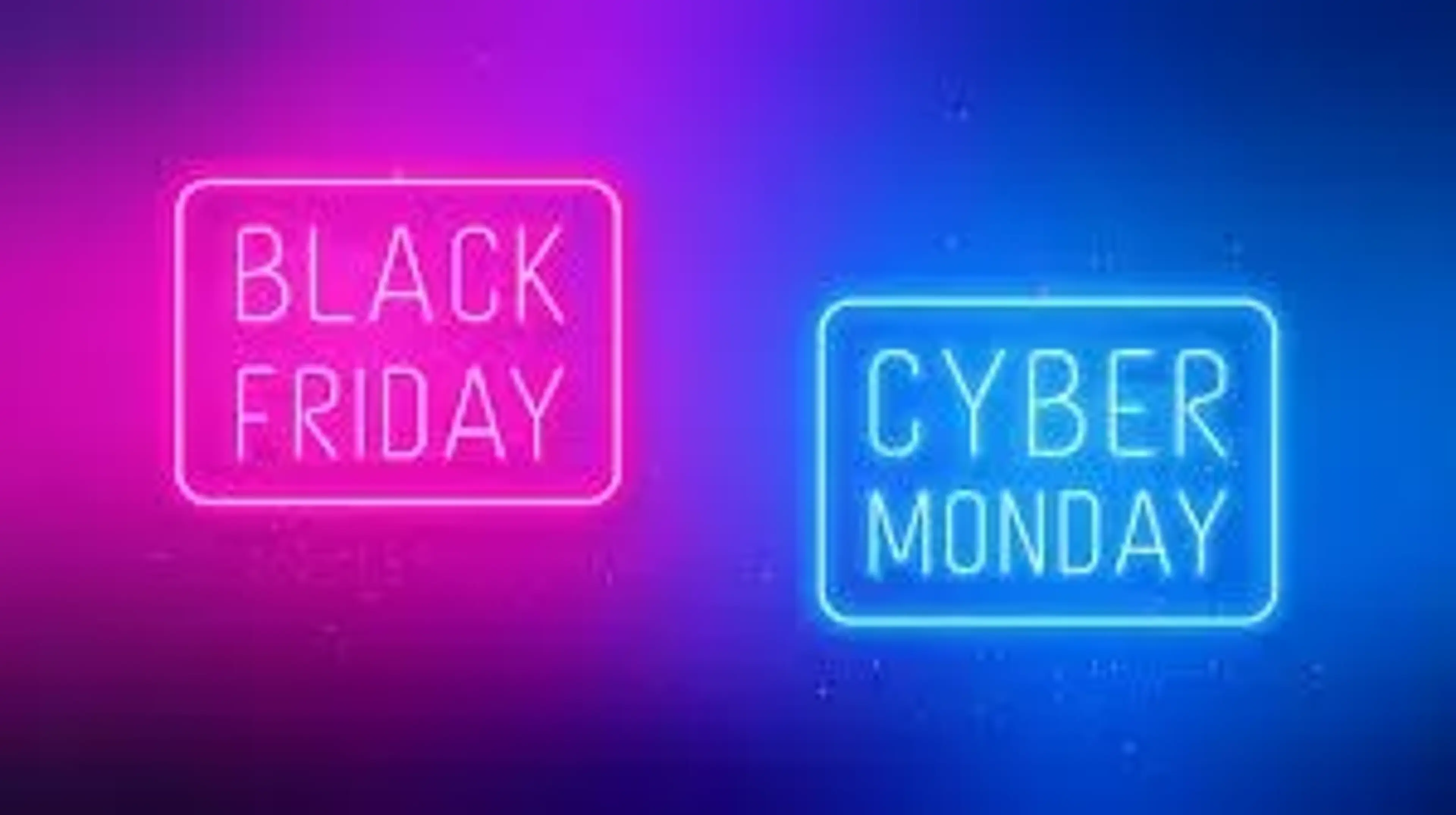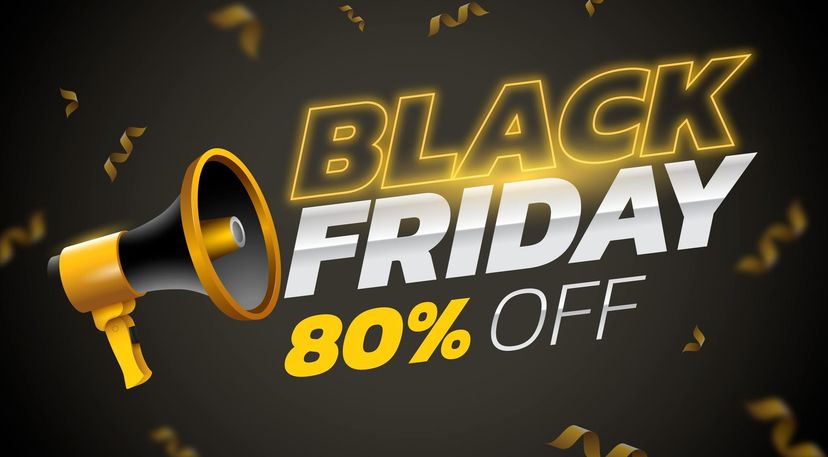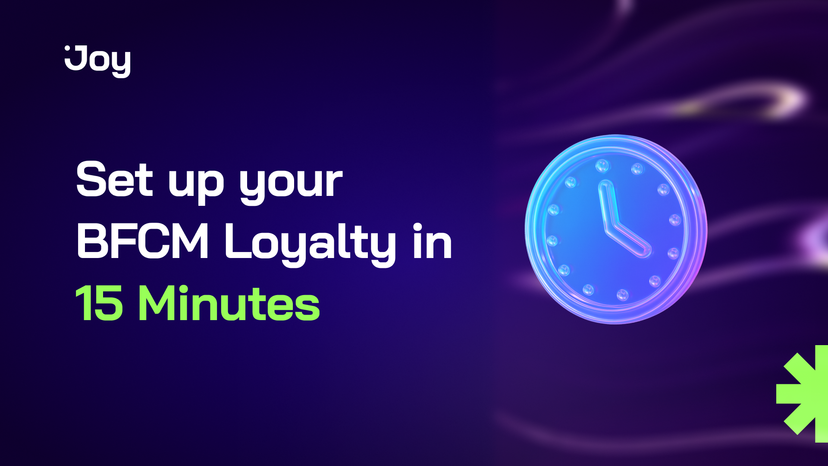The holiday shopping season is the most critical time of the year for many merchants. It attracts a wave of eager buyers, boosts cash flow, and presents rare opportunities to reach new customers. Within this short but high-stakes window, two significant events lead the race: Black Friday and Cyber Monday.
Both drive massive sales, but in very different ways. In fact, Black Friday is built on upfront excitement, fast action, and doorbuster-style deals, whether in-store or online.
Cyber Monday, by contrast, highlights speed, comfort, and ease of digital shopping. Understanding these differences helps you choose the proper offer structure, plan inventory more accurately, and allocate your marketing budget more wisely.
So, which event best suits your business, Black Friday or Cyber Monday? Let’s explore in this article.
What is Black Friday?
Black Friday, the Friday after U.S. Thanksgiving, marks the unofficial kickoff to the holiday shopping season. Retailers began using the term to describe the moment their books shifted from “in the red” to “in the black,” fueled by a surge of early holiday spending.
Over the years, Black Friday has expanded into a multi-week retail event defined by urgency, limited quantities, and aggressive discounts, especially in electronics, home goods, and toys. Its fast-paced, deal-driven nature is what distinguishes it from Cyber Monday and shapes which event will work best for your business.
What is Cyber Monday?
Cyber Monday takes place the Monday after Thanksgiving and was introduced in the mid-2000s, when online retailers noticed a surge in shoppers returning to work and continuing their holiday buying online. It quickly became the biggest online shopping day of the year.
While Black Friday began as an in-store event, Cyber Monday was built entirely for digital convenience, with sitewide discount codes, flash sales on gadgets and accessories, and perks like free shipping or bonus rewards. Many brands also use Cyber Monday to move remaining Black Friday inventory through fresh, online-only promotions.
Today, the line between the two events is increasingly blurred. Many merchants blend them into one extended campaign, known as “Cyber Week,” combining the excitement of Black Friday with the convenience of online shopping. For shoppers, it offers more flexibility; for businesses, it creates a longer, more consistent window to capture conversions across every channel.
Key Differences Between Black Friday and Cyber Monday
Although both events sit within the same holiday shopping window, Black Friday and Cyber Monday attract different behaviors, priorities, and planning styles. Understanding how they diverge helps you decide which one better matches your goals, or how to blend both into one seamless campaign:
Dimension | Black Friday | Cyber Monday |
Origin & focus | Started as a post-Thanksgiving retail event and evolved into the biggest in-store shopping day of the year. | Coined in 2005 to boost online sales after the holiday weekend. |
Shopping behavior | Early-morning lines, doorbusters, and big-ticket electronics or appliance deals . Many promotions start days or even weeks ahead. | Peak online traffic in the evening, with shoppers filling digital carts across categories using sitewide codes. |
Sales performance | Huge both in stores and online — about 126 million in-store shoppers across the 2024 weekend. | The largest online sales day in the U.S., reaching roughly $13.3 billion in 2024. |
Discount style | Doorbusters, limited quantities, and steep markdowns on high-value products. | Broad sitewide codes, free shipping, and perks like BNPL or loyalty bonuses. |
Marketing approach | Heavy buildup in the weeks before; early-access offers and VIP lists to create anticipation. | Strong conversion focus with timers, cart reminders, and flexible return policies. |
Operations focus | Prepare for crowds, in-store logistics, curbside pickup, and inventory control. | Optimize site speed, customer-support capacity, and delivery fulfillment. |
Should You Go All In on Black Friday, Cyber Monday, or Both?
The correct answer depends on your business model, your audience, and the operational capacity you can handle during peak periods. Each brand type benefits differently from Black Friday, Cyber Monday, or a combined “Cyber Week” strategy.

For offline-only businesses
Black Friday should remain your anchor. It’s built for doorbusters, in-store excitement, and limited-quantity deals. Your priority is to create urgency, get shoppers through the door, and convert them on the spot with compelling in-store-only offers.
For hybrid businesses (In-store + online, but store-led)
Suppose your business sells both online and offline, but performs better in-store. In that case, you can maximize Black Friday by leveraging your retail presence to drive momentum and then extending that momentum online through:
- Start strong on Black Friday with in-store drivers such as window signage, loyalty-member previews, or “shop in-store, unlock an online bonus.”
- Use your physical locations to build excitement and capture high-intent shoppers early.
- Shift that momentum into digital channels for Cyber Monday.
- Retarget weekend visitors with follow-up offers, online restocks, or exclusive bundles to re-engage them online.
This approach lets your retail presence generate the hype while your online channels convert it into repeat traffic and additional revenue.
For online-first or fully digital brands
If your brand lives primarily online, don’t choose - connect both events into one continuous funnel.
- Black Friday becomes your attention driver, powered by broad awareness campaigns, early access sign-ups, and bold sitewide offers.
- Cyber Monday then becomes your conversion engine, where you re-engage those visitors with personalized deals, email reminders, and free shipping or bonus incentives.
Treat both as two halves of one continuous campaign - same creative direction, refreshed messaging, and evolving urgency cues. This extended “Cyber Week” approach provides a longer conversion window, steadier ad performance, and richer remarketing data for the remainder of the holiday season.
How to Prepare and Execute Your BFCM 2025 Campaign
If you’re planning to run both Black Friday and Cyber Monday, treat them as one connected strategy rather than two separate events. Each stage builds upon the previous one, creating a seamless journey that keeps shoppers engaged from the initial teaser to the final thank-you email.

Pre-Event: Build Awareness and Prepare for Demand
The pre-event stage is about building readiness, trust, and controlled anticipation. The smoother and more predictable your store feels, the more confidently customers will spend once your sale goes live.
To prepare effectively, focus on four foundations:
- Refine your product and pricing strategy. Identify hero SKUs with healthy/high margins or strong conversion history. Build your offer architecture around them: bundles, curated sets, tiered discounts (e.g., ‘20% off one item, 30% off two’), or giftable combinations that naturally increase AOV.”
- Warm up your audience. Launch teaser campaigns through email and social ads that build curiosity without revealing the full promotion. Early-access sign-ups or “VIP first look” offers help you segment your high-intent shoppers ahead of launch.
- Optimize your website and checkout experience. Ensure your site is fast, stable, and friction-free: compress media, stress-test checkout flows, confirm coupon logic, and verify inventory syncs. Even a one-second delay can reduce conversions by up to 7%, so technical readiness directly affects profit.
- Align your team and operations. The team should finalize customer-service scripts, shipping policies, fulfillment workflows, and restock plans. A transparent handoff between marketing, merchandising, and logistics ensures every order can be fulfilled accurately and on time, especially when volume spikes
During the Event: Drive Conversion and Manage Momentum
When your sale goes live, attention spans shrink and competition intensifies. This is the moment your strategy must shift from planning to execution, prioritizing speed and agile optimization to turn shopper intent into immediate action.
Now’s the time to:
- Lead with one clear, high-impact offer. Simplicity wins during BFCM. Whether it’s “30 % off everything” or “Buy 2 Get 1 Free,” keep messaging consistent across ads, landing pages, and email subject lines.
- Capitalize on urgency triggers. Utilize countdown timers, low-stock alerts, or “ends tonight” banners to expedite decision-making. Pair urgency with transparency; false scarcity can damage credibility.
- Monitor performance live: Track KPIs hourly: conversion rate, best-selling SKUs, and checkout abandonment. Be ready to update hero banners or pause weak campaigns mid-sale to protect ROI.
- Keep communication real-time. Fast customer service responses, chatbot automation, and SMS reminders can help recover abandoned carts or upsell complementary items.
- Synchronize channels. For omnichannel retailers, ensure that in-store pickups, same-day delivery, and online stock visibility remain aligned so customers can buy wherever it’s most convenient.
Post-Event: Retain, Re-Engage, and Learn
Once the rush of long-term customers has passed, many brands stop, but the strongest ones use this window to turn first-time buyers into long-term customers. The post-event phase focuses on relationship-building, data analysis, and fostering long-term growth.
To wrap things up effectively, make sure to:
- Follow up with gratitude and personalization. Send thank-you emails that include order tracking, personalized product recommendations, or loyalty-point reminders. This keeps engagement alive beyond the transaction.
- Encourage social proof. Invite reviews, photos, or testimonials; reward submissions with small discounts or giveaway entries. User-generated content reinforces trust for future promotions.
- Segment and nurture new customers. Create post-BFCM automation flows that distinguish one-time deal hunters from high-potential repeat buyers. Offer exclusive December or New Year previews to keep them warm.
- Evaluate campaign performance. Review metrics across traffic sources, creative assets, and fulfillment efficiency. Document learnings on what boosted conversion and where bottlenecks occurred.
9. Frequently Asked Questions (FAQ) Section
When is Black Friday 2025?
Black Friday in 2025 falls on Friday, November 28, the day after U.S. Thanksgiving (Thursday, November 27). It officially marks the start of the holiday shopping season and is often the busiest retail day of the year.
When is Cyber Monday 2025?
Cyber Monday will be on Monday, December 1, 2025, following directly after Black Friday. It was created to promote online shopping and has since become the world's biggest eCommerce sales day.
Is Cyber Monday better than Black Friday?
Not necessarily, each event serves a different purpose. Black Friday is ideal for in-store and big-ticket promotions, while Cyber Monday is suited for online-only and convenience-driven shoppers. The best approach depends on your sales channel and target audience.
Black Friday deals vs. Cyber Monday deals: Which is better for my business?
If your customers value immediate purchases or in-person experiences, focus on Black Friday. If your brand thrives online with smooth checkout and digital engagement, Cyber Monday will likely perform better. Many brands now merge “Cyber Week” into a single event for all audiences.
How should a small business prepare for BFCM (Black Friday / Cyber Monday)?
Start early. Plan your offers and stock levels, ensure your website can handle peak traffic, and coordinate marketing, fulfillment, and support teams. During the event, keep messaging fast and straightforward. Afterward, follow up with personalized thank-you emails, gather reviews, and use insights to improve your December campaigns.
Final thought
Each shopping event tells a different story of customer intent: Black Friday rewards immediacy, while Cyber Monday celebrates personalization. The most resilient brands read both signals and turn them into one continuous rhythm of sales and loyalty.
Now’s the moment to map your peak-season strategy, identify where your customers show up, meet them there, and own the momentum from the first click to the final sale.




